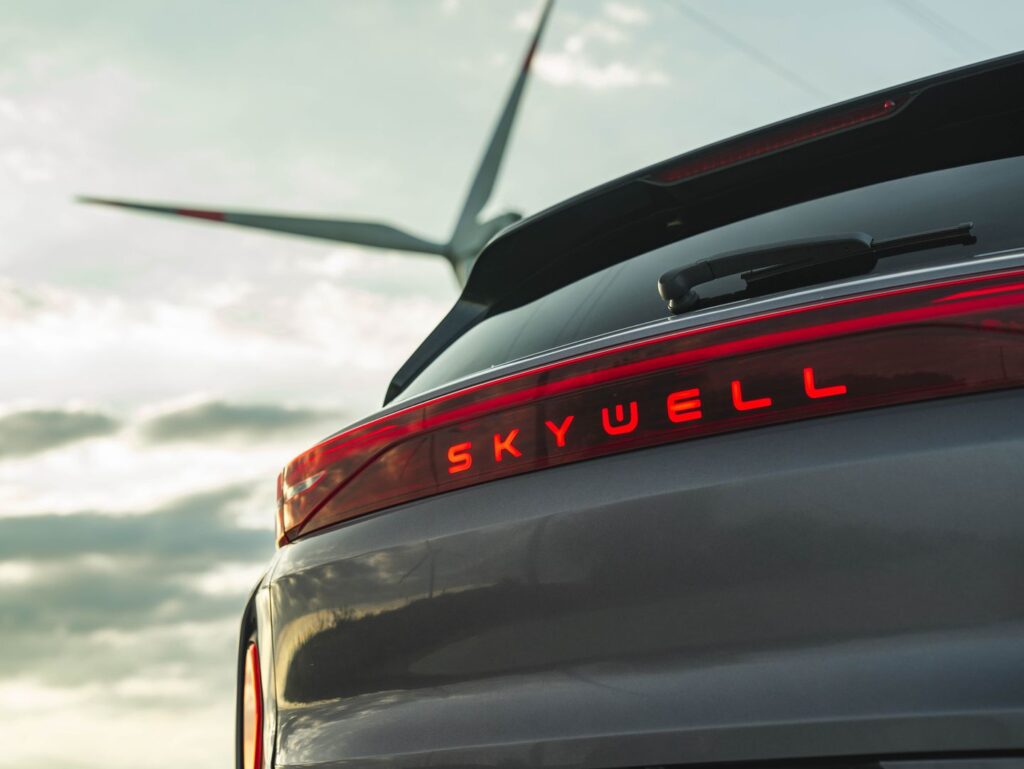Electric cars are rapidly gaining popularity in the modern automotive industry and are known for their environmentally friendly features. Unlike traditional internal combustion engine vehicles, electric vehicles offer numerous advantages. In this article, we will provide information about the performance and driving experience in electric cars.
Factors Affecting Electric Vehicle Performance

There are many factors that affect the performance of electric vehicles. These factors can be grouped under headings such as battery capacity, motor power, aerodynamic design, tire characteristics, and driving modes.
- Aerodynamic Design:Aerodynamic design provides a more efficient drive by reducing the vehicle’s air resistance. This increases the range of the vehicle and reduces energy consumption. Advanced aerodynamic design positively affects driving range as it influences fuel consumption. Therefore, aerodynamic design is a critical factor in terms of the range and performance of electric vehicles.
- Tires: Tires have a significant impact on the driving experience in electric vehicles. The batteries of electric vehicles are heavier than those of conventional vehicles, so it is important that the tires can support this weight. Specially designed tires reduce rolling resistance, allowing the batteries to be used more efficiently. This enhances performance and offers a better driving experience.
- Driving Modes: Another important factor affecting the performance of electric vehicles is driving modes. Different driving modes optimize the vehicle’s energy consumption and range. For example, Eco mode increases the driving range by reducing energy consumption, while Sport mode increases performance and energy consumption. Drivers can save energy without sacrificing performance and increase driving range by selecting the driving mode suitable for their driving conditions and needs.
- Battery Capacity: Battery capacity plays a significant role in the performance of electric vehicles. Battery capacity is one of the main factors determining how far a vehicle can travel and how fast it can go. High-capacity batteries offer longer range and better driving performance. Additionally, high-capacity batteries can store more energy and retain this energy for longer, positively affecting the vehicle’s acceleration and torque performance. Thus, an electric vehicle equipped with high-capacity batteries can provide superior performance in terms of speed by offering higher torque.
- Motor Power: Motor power is another crucial factor that directly affects the performance of electric vehicles. Motor power determines the vehicle’s acceleration, torque, and maximum speed performance. Electric vehicles with higher motor power can reach higher speed levels. Additionally, these vehicles provide a powerful experience in terms of traction and driving dynamics by producing higher torque.
Why Do Electric Vehicles Accelerate Faster?
Electric vehicles offer many advantages to users compared to traditional internal combustion engine vehicles. Among these, the quick acceleration feature of electric vehicles stands out. The motors of electric vehicles can produce torque instantly, which provides rapid acceleration. This feature can be surprising for users who have questions about the performance of electric vehicles. Thanks to instant torque production, electric vehicles perform much better than fossil fuel models during acceleration.
Why Are Electric Vehicles Slower?
The belief that electric vehicles are slower than traditional vehicles is common. However, this belief is not entirely accurate. Electric vehicles have many superior features compared to traditional vehicles in terms of driving performance. Electric vehicles, which can accelerate faster with instant torque production, can reach high speeds in a short time. Additionally, electric vehicles have fewer moving parts, reducing energy loss caused by friction. These factors make electric vehicles faster than traditional vehicles. However, current battery technologies may limit the high-speed capabilities of all electric vehicles. These limitations can be overcome with more advanced battery technologies in the near future.
Studies on the Performance of Electric Vehicles
Electric vehicles are considered the transportation mode of the future due to their environmental profile. Therefore, many studies are being conducted to improve the performance of electric vehicles. These studies focus particularly on features such as acceleration, range, and charging time of the vehicle. Studies on electric vehicles continue to increase the number of charging stations and make these stations faster.
Driving Modes and Performance in Electric Vehicles

One of the most important factors determining the performance of electric vehicles is driving modes. Electric vehicles have driving modes suitable for variables such as torque demand, battery conditions, and energy efficiency for maximum performance. Driving modes optimize the vehicle’s efficiency and performance. Different driving modes usually optimize various aspects of the driving experience, such as energy efficiency, power output, and regenerative braking.
- Customizable Modes: Some electric cars allow drivers to customize driving modes. These modes enable the selection of settings such as power output, regenerative braking power, and climate control according to the driver’s preferences and driving conditions.
- Range Mode: Range mode maximizes driving range by saving energy. It can limit power output, throttle response, and reduce cabin climate control to extend range on a single charge.
- One-Pedal Driving: Some electric vehicles offer a one-pedal driving mode that maximizes regenerative braking. When you lift off the accelerator pedal, the vehicle decelerates aggressively, increasing efficiency and reducing wear on traditional brakes.
- Tow Mode: Tow mode is designed for towing heavy loads. It optimizes power distribution and regenerative braking to improve balance and efficiency during towing.
- Eco Mode: Eco mode is designed to maximize energy efficiency. In this mode, the vehicle’s power output is limited, and throttle response is reduced. Climate and heating systems are also adjusted to consume less energy. Regenerative braking is more aggressive in Eco mode to save more energy during deceleration.
- Standard Mode: Standard mode provides a balanced driving experience. It offers a good combination of power and efficiency, making it suitable for everyday driving.
- Sport Mode: Sport mode is designed to provide maximum power and performance. In this mode, the electric motor operates at its full potential. This can reduce efficiency but offers a more enjoyable driving experience.
For more content like ‘Performance and Driving Experience in Electric Cars’ you can check out our general category.
Advantages of Electric Vehicle Driving Modes
Electric vehicle driving modes allow vehicles to adapt to a wide range of driving conditions. Whether you need efficiency during daily commuting, extra power for highway driving, or better traction in adverse weather conditions, driving modes offer flexibility.
- Regenerative Braking: Regenerative braking is enhanced in certain driving modes. This increases energy efficiency and reduces wear on the traditional brake system.
- Towing: Driving modes designed for towing optimize power distribution and balance for towing heavy loads.
- Adaptation to Road Conditions: Some vehicles have modes adapted for off-road driving or specific road conditions. These modes adjust traction control, suspension, and other parameters to enhance performance and safety in challenging environments.
- Range Extension: Driving modes like Eco and Range are designed to extend driving range. This is useful for long journeys or when charging infrastructure is limited.
- Lower Environmental Impact: Electric cars contribute to reducing greenhouse gas emissions and dependence on fossil fuels by offering energy-efficient driving modes.
- Quiet Mode: Some luxury vehicles offer a “quiet mode” that minimizes engine or motor noise for a quieter driving experience. This is useful for chauffeuring passengers or driving in residential areas.
- Energy Efficiency: Many driving modes are designed to optimize energy efficiency. Eco or Range modes save battery energy, extending driving range.
- Safety: Driving modes can enhance safety by adjusting various vehicle parameters. In adverse weather conditions, some modes optimize traction control and stability systems to prevent skidding or slipping.
- Performance: Sport or dynamic driving modes provide more power output, sharper throttle response, and improved handling characteristics. This makes the driving experience more exciting.
- Personalization: Some vehicles allow drivers to customize driving modes according to their preferences. This allows finding the perfect balance between efficiency, performance, and comfort.
Electric cars stand out as the transportation mode of the future with their environmentally friendly features, superior performance, and various driving modes. Superior to traditional vehicles in terms of performance and driving experience, electric vehicles also attract attention with their energy efficiency, safety, and personalization options. As electric vehicle technologies advance, these vehicles will become even more widespread and play a significant role in the future of transportation.
You might be interested in:
How to Maintain Your Electric Car in the Summer?
8 Reasons to Drive an Electric Car
Do Electric Cars Charge Themselves?

